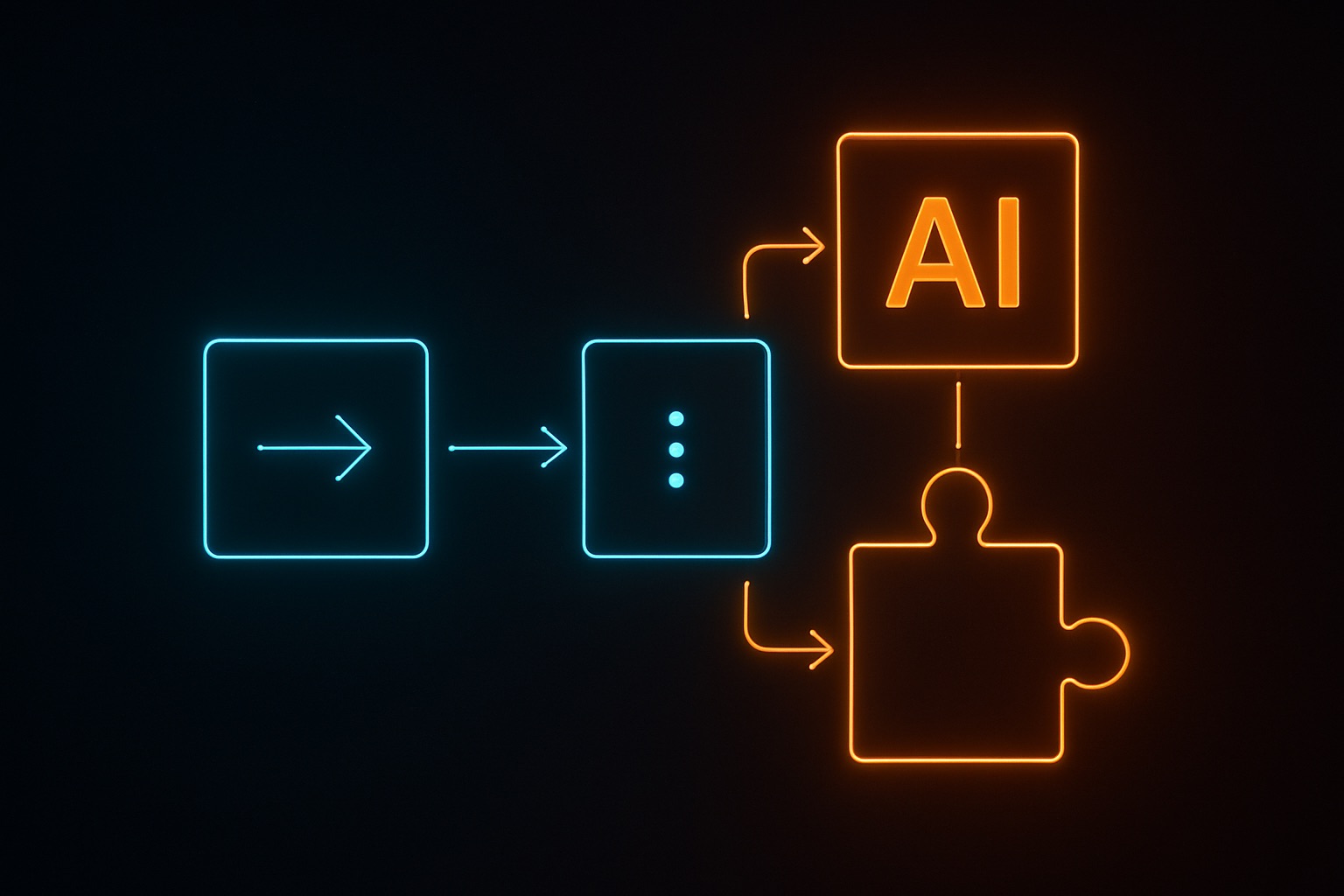Trigger.dev for composable - automate everything, without the headaches

Why Trigger.dev Is a Must-Have for Headless, Serverless, and Composable Development
In today’s modern development landscape, where headless, serverless, and composable architectures dominate, orchestrating asynchronous workflows across decoupled systems has become both a necessity and a challenge.
Trigger.dev rises to meet that challenge: an open-source background jobs framework designed for modern dev stacks. It empowers developers to run long-lived, reliable workflows directly from their codebase---without worrying about timeouts or brittle queue systems.
🚀 What Is Trigger.dev?
Trigger.dev lets you write background jobs in TypeScript or JavaScript, right inside your app repo. It runs serverless by design, durable by nature, and integrates natively with modern services like Contentful, Algolia, OpenAI, Supabase, Slack, and more.
Think of it as Zapier for developers---except you version-control everything, and it lives in your codebase.
🧱 Why It’s a Perfect Fit for Composable Architectures
1. No Timeouts. Ever.
If you’ve ever hit execution limits on serverless platforms like Vercel, Netlify, or AWS Lambda, you’ll appreciate this: Trigger.dev uses checkpoint-resume to allow workflows to pause and resume over days or even weeks.
Perfect for:
-
Product enrichment workflows
-
Long-running AI inference
-
Back-and-forth API orchestration
2. First-Class Observability
Every step in a job is tracked, logged, and visualized. Whether it’s a webhook trigger, an OpenAI call, or a content sync---Trigger.dev shows you:
-
When it ran
-
What it did
-
What failed and why
This kind of transparency makes debugging a joy.
3. Built for Headless and Composable Workflows
Headless CMS? Composable commerce? Distributed data? That’s Trigger.dev’s native playground.
Let’s look at some practical integration examples.
🔄 Integration Examples
🔍 Contentful + Algolia
Use case: Keep Algolia’s index in sync with your CMS content.
╭────────────╮ ╭──────────────────────╮ ╭───────────────╮
│ Contentful │───▶──│ Trigger.dev Workflow │───▶──│ Algolia Index │
╰────────────╯ ╰──────────────────────╯ ╰───────────────╯
Every time an editor publishes or updates a blog post in Contentful, your Algolia search index is updated within seconds---fully automated.
📍 PIM System + Contentful
Use case: Sync product data from your PIM (like Akeneo) to your CMS for editorial teams.
╭────────────╮ ╭──────────────────────╮ ╭────────────────╮
│ PIM │───▶──│ Trigger.dev Workflow │───▶──│ Contentful CMS │
╰────────────╯ ╰──────────────────────╯ ╰────────────────╯This ensures that editorial content and product data are always aligned---no more manual duplication.
🛒 Commerce Layer + Contentful
Use case: When a new SKU is added in Commerce Layer, create a matching entry in Contentful for editorial storytelling.
╭────────────────╮ ╭──────────────────────╮ ╭──────────────────────╮
│ Commerce Layer │──▶──│ Trigger.dev Workflow │──▶──│ Contentful CMS Entry │
╰────────────────╯ ╰──────────────────────╯ ╰──────────────────────╯
Now your product and content stay composable, cleanly decoupled---but tightly in sync.
🧠 AI Use Cases with Trigger.dev
Thanks to native support for OpenAI and other APIs, Trigger.dev makes it easy to plug AI into any workflow.
📝 Auto-generate Product Descriptions
╭──────────────╮ ╭──────────────────╮ ╭───────────────────────────╮
│ Product Name │──▶──│ OpenAI Completion │──▶──│ Contentful Product Update │
╰──────────────╯ ╰──────────────────╯ ╰───────────────────────────╯
🖼 AI Image Tagging for CMS
╭──────────────╮ ╭───────────────────╮ ╭─────────────────────────╮
│ Image Upload │──▶──│ AI Tagging Model │──▶──│ Contentful Image Update │
╰──────────────╯ ╰───────────────────╯ ╰─────────────────────────╯
🧠 Personalized Recommendations (Post-purchase)
╭────────────────╮ ╭─────────────────────╮ ╭─────────────────────╮
│ User Purchase │──▶──│ OpenAI Suggestions │──▶──│ Email via SendGrid │
╰────────────────╯ ╰─────────────────────╯ ╰─────────────────────╯
AI + workflow automation = powerful, scalable personalization.
✅ Why Trigger.dev Belongs in Your Stack
| Feature | Why It Matters |
|---|---|
| Durable workflows | Resume after hours, days, or failures |
| Serverless friendly | Built for Vercel, Netlify, Cloudflare, AWS |
| Developer-owned | All jobs live in your codebase---no vendor lock-in |
| Deep observability | Visual logs, retries, alerts out of the box |
| Composable ready | Orchestrates data between CMS, PIM, search, commerce, AI |
🧹 Final Thoughts
Trigger.dev isn’t just a job runner — it’s a workflow OS for composable systems.
If your app talks to multiple APIs, syncs content between services, or uses AI to enrich user experiences, then Trigger.dev can become your backbone.
And the best part? It’s open source, flexible, and developer-first.
Want to try it out?